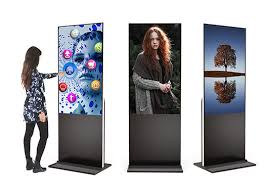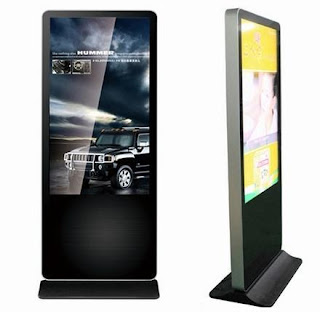What Unique Features Do Touch Screen Kiosks Offer?
There is no denying
that touch technology forms a core part of the modern life. Take for instance
smartphones, laptops and networked touch panels. All of them have one
electronic component that is often called a touchscreen. In this respect; a
clear distinction should be made between the conventional touch screen displays
and the touch screen kiosks as they have different constructions and
operational functionalities.
Understanding Touch Screens:
Touch screens are
devices with a single display and input, allowing interaction solely on the
tube screen. They are commonly found on digital devices like cell phones, pads,
and laptops. Different types of touch screens, including resistive, capacitive,
and infrared, have their advantages and disadvantages. Touch screens are
user-friendly, allowing manipulation of applications, internet activities, and
software without traditional keyboards or mouse points.
What is a Touch Screen Kiosk?
Touch screen kiosks
are self-service systems with a touch screen as the main device for customers
and guests to operate. Common uses include information kiosks in museums,
airport check-in stations, digital signage in retail stores, and wayfinding
systems in large venues. These kiosks are often equipped with auxiliary
hardware peripherals like scanners, printers, or payment gateways for advanced
tasks and are designed to withstand abuse for multiple users daily.
Key Differences:
- Functionality: Although touch screen devices are quite flexible enough and can be integrated in many devices, touch screen kiosks are embedded with user interface features and functions that are specific in nature and hence the user is engaged in a very narrow task.
- Hardware: Touch screen kiosks typically integrate wirelessly connected additional parts such as payment solutions or printers that standard touch screens would not possess as they are normal screen devices only.
- Environment: Touch screen kiosks are meant for communal use and most times are designed in a way to be tampered with and vandalized but, the normal touch screens are mainly attached to personal gadgets.
- User Interaction: Kiosks typically feature a straightforward interface that is intended for brief transactions, whereas a standard touch screen may have more advanced applications which require longer interaction with the device.
Conclusion:
In summary, it is
clear that despite the similarity in use of touch screens and touch screen
kiosks, the two have distinct markets and markets. It is important to appreciate
these variations if one is to adopt useful interactive solutions for business
and organization. The first category consists of a plain industrial touch
screen for the device to exhibit to full-fledged touch screen kiosks intended
for locations with a great number of people, all of which is customized for
different requirements.
A touch screen is a
type of display device for personal computers that incorporates touch
interactivity, while touch screen kiosk is termed as an office or banking kiosk
and has implications for use outdoors, which incorporates more functions such
as payment. If you are searching for affordable touch screen hire and Touch Screen Kiosk Rental in Dubai, you can use VRS Technologies LLC!
Check out our website www.vrscomputers.com or call us on +971-55-5182748 for further details.



Comments
Post a Comment